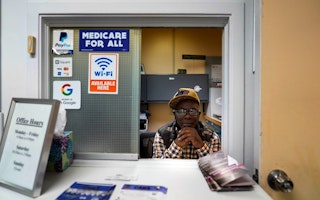Is Chocolate the Real Gateway Drug?
By Thomas Cargiulo
You’ve probably heard about the term “gateway drug.” Generally, the theory posits, a gateway drug is the first drug a person takes that then leads them on the way to “harsher” drugs and ultimately leads the way to addiction. Recently, a report was published in the Journal of School Health concluding that alcohol is the new gateway drug, displacing marijuana from this infamous label.
This new claim was received with mixed emotions. Many professionals who tout the evils of marijuana use the gateway theory as propaganda to continue the attack against this plant. But now that the new gateway drug is supposedly alcohol, there is less ammo to fight the war on marijuana. The research showing marijuana was a gateway drug was based on correlative data. In other words, since most people who use “hard” drugs had first used marijuana, then marijuana must be the culprit that pushed them on to the next step. But that’s not necessarily true. And the research supporting alcohol as the new gateway drug is also flawed. The flaw is, quite simply, that the new report only looked at alcohol, tobacco, and marijuana as possible gateway drugs. As we see increases in prescription drug use, synthetic drug use, and other legal highs, we need to look more broadly at what is considered to be first drug use—and if it leads to taking others.
A study at Princeton University published in Neuroscience and Biobehavioral Reviews in 2008 showed that rats given glucose (sugar) actually stimulates the same receptors as heroin. In fact, the effect was so similar to the heroin stimulation that when the rats were given naloxone, a medication that treats heroin overdoses, the rats experienced the same kind of withdrawal.
Chocolate has a significant amount of sugar. In addition to sugar, chocolate also has two other neuroactive drugs, caffeine and theobromine. Chocolate not only stimulates the opiate receptors in our brains, it also causes a release of neurochemicals in the brain’s pleasure centers. Chocolate, like other drugs, if used in excess can lead to negative health effects such as type II diabetes, obesity, and high cholesterol. So this would indicate that chocolate can be a part of any discussion about legal drugs.
If we use the same logic that has been used with determining that marijuana and alcohol are gateway drugs, then chocolate may be the true gateway drug. People eat chocolate long before they use alcohol, marijuana, nicotine, or hard drugs. In the past, vilifying marijuana fit with our failed drug policy that sends a message that illicit drugs – and the people who use them – are bad. However, if chocolate is part of the discussion, it shows the flaws of our drug policies these past 100 years. Specifically, drugs and the people who use them are not inherently good or evil.
Until June 2013, Dr. Thomas Cargiulo was the program director for OSI-Baltimore’s Tackling Drug Addiction Initiative.

